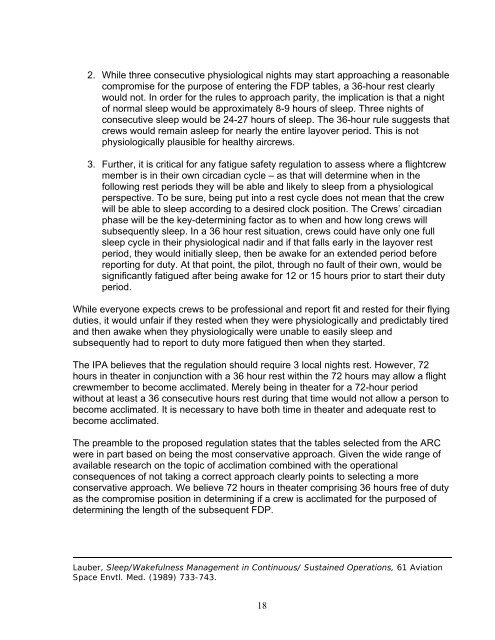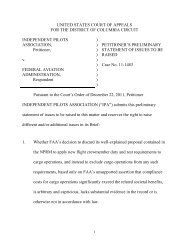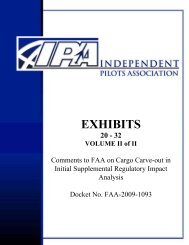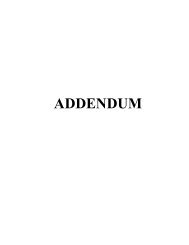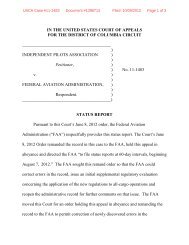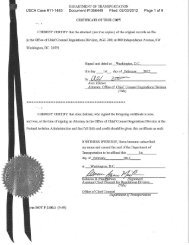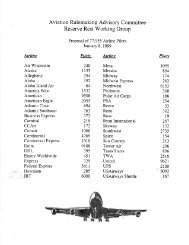Submission - Independent Pilots Association
Submission - Independent Pilots Association
Submission - Independent Pilots Association
You also want an ePaper? Increase the reach of your titles
YUMPU automatically turns print PDFs into web optimized ePapers that Google loves.
2. While three consecutive physiological nights may start approaching a reasonablecompromise for the purpose of entering the FDP tables, a 36-hour rest clearlywould not. In order for the rules to approach parity, the implication is that a nightof normal sleep would be approximately 8-9 hours of sleep. Three nights ofconsecutive sleep would be 24-27 hours of sleep. The 36-hour rule suggests thatcrews would remain asleep for nearly the entire layover period. This is notphysiologically plausible for healthy aircrews.3. Further, it is critical for any fatigue safety regulation to assess where a flightcrewmember is in their own circadian cycle – as that will determine when in thefollowing rest periods they will be able and likely to sleep from a physiologicalperspective. To be sure, being put into a rest cycle does not mean that the crewwill be able to sleep according to a desired clock position. The Crews’ circadianphase will be the key-determining factor as to when and how long crews willsubsequently sleep. In a 36 hour rest situation, crews could have only one fullsleep cycle in their physiological nadir and if that falls early in the layover restperiod, they would initially sleep, then be awake for an extended period beforereporting for duty. At that point, the pilot, through no fault of their own, would besignificantly fatigued after being awake for 12 or 15 hours prior to start their dutyperiod.While everyone expects crews to be professional and report fit and rested for their flyingduties, it would unfair if they rested when they were physiologically and predictably tiredand then awake when they physiologically were unable to easily sleep andsubsequently had to report to duty more fatigued then when they started.The IPA believes that the regulation should require 3 local nights rest. However, 72hours in theater in conjunction with a 36 hour rest within the 72 hours may allow a flightcrewmember to become acclimated. Merely being in theater for a 72-hour periodwithout at least a 36 consecutive hours rest during that time would not allow a person tobecome acclimated. It is necessary to have both time in theater and adequate rest tobecome acclimated.The preamble to the proposed regulation states that the tables selected from the ARCwere in part based on being the most conservative approach. Given the wide range ofavailable research on the topic of acclimation combined with the operationalconsequences of not taking a correct approach clearly points to selecting a moreconservative approach. We believe 72 hours in theater comprising 36 hours free of dutyas the compromise position in determining if a crew is acclimated for the purposed ofdetermining the length of the subsequent FDP.Lauber, Sleep/Wakefulness Management in Continuous/ Sustained Operations, 61 AviationSpace Envtl. Med. (1989) 733-743.18


